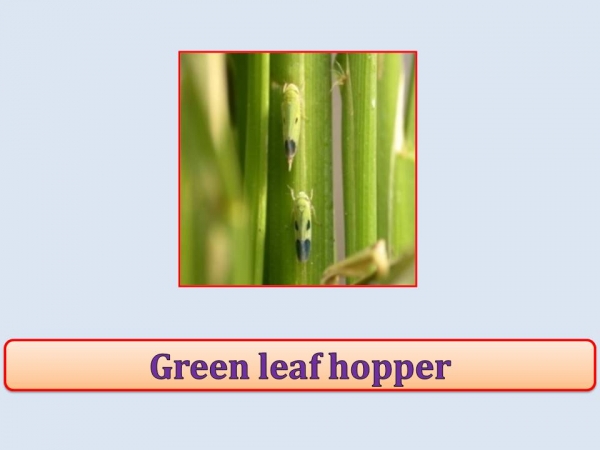
Nature of Damage:
----------------
Both nymphs and Adults suck the plant sap and cause browning of leaves.
This insect is known to be vectors of virus disease of Rice such as Rice Yellow Dwarf transmitted by N. nigropictus.Tungro virus by N. virescens.
Management of hoppers:
----------------------
Selection of resistant Variety. For BPH and WBPH- Gurjari, Narmada, GR-7, GR-101, GR- 102, IR-22, Masuri, Sukhvel-20, SLR-51214, WBPH - GR-104.
¬Early sowing - First week of July.
Higher doses of nitrogenous fertilizer encourage the pest population; therefore apply as per recommendation in tree splits.
Water scarcity and higher temperature also encourage the incidence of WBPH. Periodically drain the water from kyari land.
Monitoring the field at an interval of one week after 45 DATP to know the incidence of pest.
Make the ways after 5 to 6 rows for better application of insecticides. Dusting the crop with methyl parathion 2% dust OR carbaryl 10% dust @ 25 kg/ha with the help of power operated duster on basal portion of stem OR spraying the crop with imidacloprid 17.8% SC 0.005% - 2.8 ml OR fenobucarb 50% EC 0.075% 15 ml in 10 lit of water with the help of power operated sprayer on basal portion of stem. Insecticide also applied on bunds and hedges.

